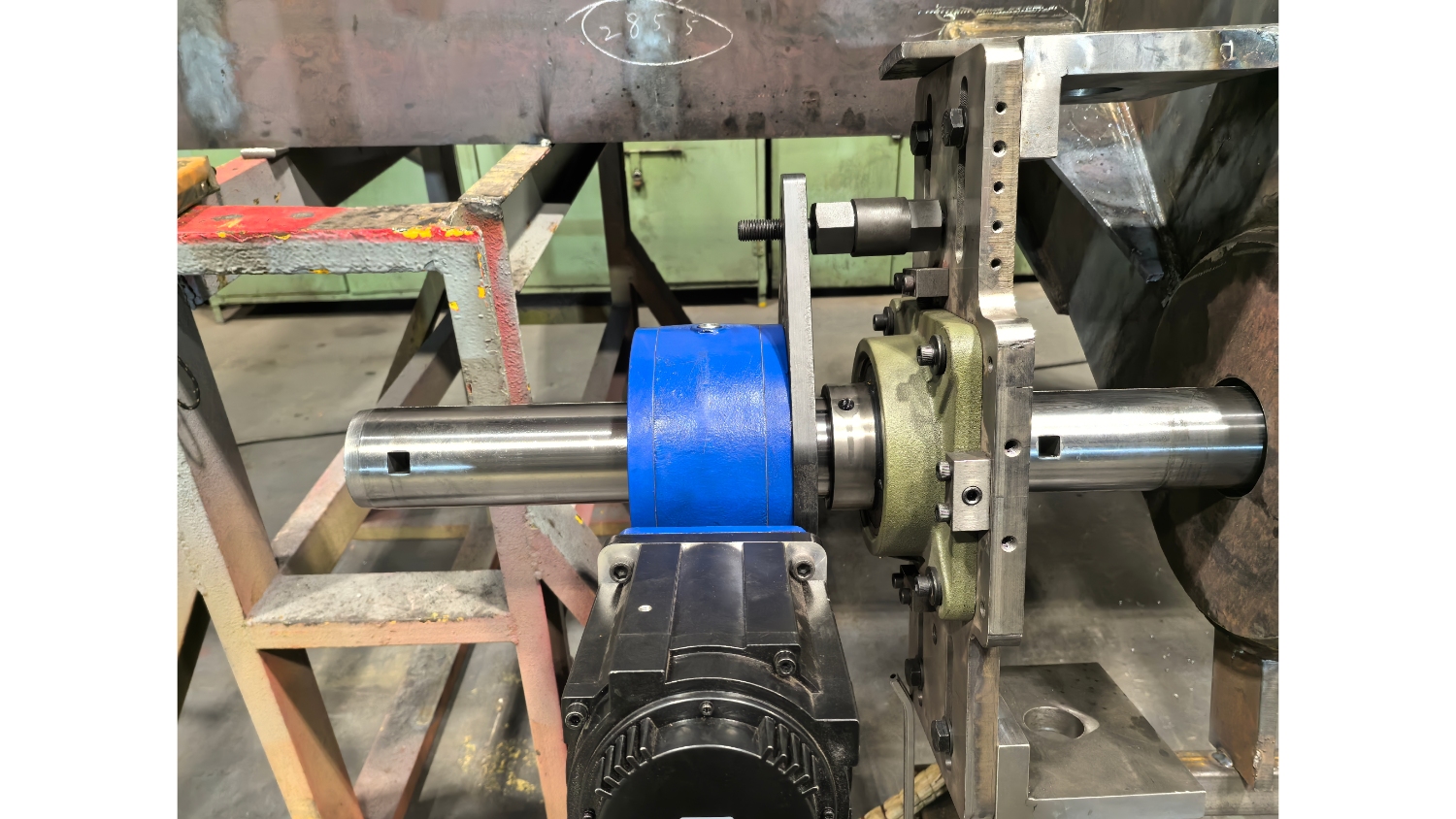Gantry cranes are core equipment in the fields of port loading and unloading, shipbuilding, etc., and their structural accuracy and operating stability directly affect the operating efficiency and safety. As a key process equipment, the boring machine plays a decisive role in the manufacturing of core components such as slewing support and crane arm of gantry cranes with its high-precision hole processing capability, significantly improving the structural accuracy and operating stability of the equipment, and ensuring efficient and safe operations in the fields of port loading and unloading, shipbuilding, etc.

I. Technical characteristics and classification of boring machines
1. Floor-standing boring machine
Suitable for the processing of large box-type parts, such as the slewing support base of gantry cranes. Its workbench can bear hundreds of tons, the boring shaft diameter is usually between 100-200mm, and the positioning accuracy can reach ±0.02mm/m.
2. CNC boring and milling machine
Integrated milling and boring functions, suitable for processing complex structural parts such as crane arms. Through the CNC system to control multi-axis linkage, high-precision hole system and plane integrated processing can be achieved.
3. Portable boring machine
Designed for on-site maintenance scenarios, such as the repair of the bearing seat hole of the port crane after wear. The equipment can complete the boring operation without disassembling the parts, significantly shortening the downtime.
II. Key components and processing requirements of portal cranes
The core structure of the portal crane includes the slewing support device, the boom, the balance arm, the walking mechanism and the hydraulic system. Among them, the key parts such as the bearing seat hole of the slewing support device, the boom pin shaft hole, and the hydraulic cylinder mounting hole have extremely high requirements for processing accuracy. For example, the coaxiality of the bearing seat hole of the slewing support device must be controlled within 0.05mm, otherwise it will cause vibration and noise during the operation of the crane, and even cause safety accidents.
Traditional processing methods (such as drilling machines and radial drills) are difficult to meet the processing requirements of high-precision hole systems, and boring machines have become the core equipment for the manufacturing of portal crane components with their advantages of good rigidity, high positioning accuracy, and the ability to realize complex hole system processing.

III. Core technical advantages of boring machines
Compared with traditional processing methods, modern CNC boring machines have become a powerful tool for solving crane processing problems through three major technological innovations:
1. Precision positioning and error compensation system
The boring machine adopts a fully closed-loop servo control system, combined with laser interferometer calibration technology, to achieve a positioning accuracy of ±0.005mm/m. By collecting machine tool thermal deformation data in real time, the system can automatically compensate for errors caused by temperature changes.
Typical case: In the processing of a 40-ton gantry crane slewing bearing hole, the roundness error of the Φ3200mm hole is controlled at 0.018mm through dynamic compensation technology
2. Intelligent processing parameter optimization system
The adaptive control system based on the neural network algorithm can monitor cutting force, torque and other parameters in real time, and automatically adjust the feed speed and spindle speed. When processing high-strength steel (σb=1200MPa), the system extends the tool life by 40% by predicting the tool wear model.
Typical case: In the processing of a certain aviation aluminum alloy thin-walled part, the system reduced the surface roughness Ra from 0.8μm to 0.4μm through a vibration suppression algorithm.
3. Multi-axis linkage composite processing capability
The five-axis linkage boring center can realize the processing of holes at any angle, and with the B-axis swing angle positioning accuracy of ±2″, it is suitable for complex curved surface structures.
Typical case: In the case of a nuclear power pressure vessel head processing, the equipment completed the precision processing of 32 inclined holes through five-axis linkage, and the hole position error was controlled at ±0.05mm, and the processing efficiency was increased by 60%.

IV. Technology development trends and industry prospects
1. Intelligent processing driven by digital twins
Combined with the Internet of Things (IoT) technology, real-time data collection and analysis of the boring process are realized, and processing parameters are optimized through AI algorithms to improve production efficiency.
2. Cloud collaborative manufacturing system
Data such as processing parameters and tool status are uploaded to the cloud in real time, and the process optimization suggestion system based on big data analysis continuously improves processing efficiency
3. Green manufacturing technology innovation
The micro-lubrication (MQL) technology reduces the amount of cutting fluid by 70%, the tool coating technology is upgraded, the carbon emissions are reduced by 15-20%, and the environmental pollution is reduced
V. Conclusion
The boring machine has irreplaceable technical advantages in the manufacturing and maintenance of portal cranes. Through process optimization and intelligent upgrading, the boring processing technology is experiencing a leap from "single processing" to "full process solution", further improving the processing accuracy and efficiency. In the future, with the development of new materials and new processes, boring technology will play a more important role in the field of high-end lifting equipment.